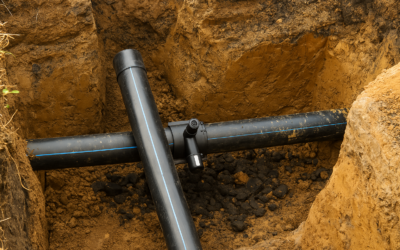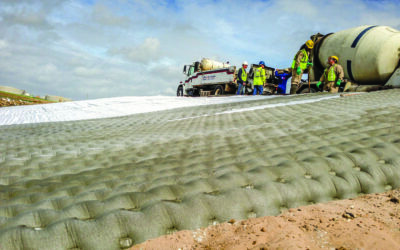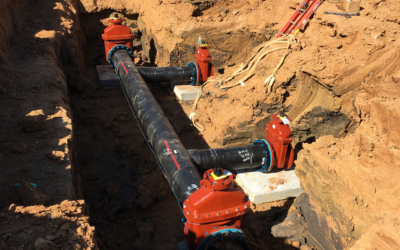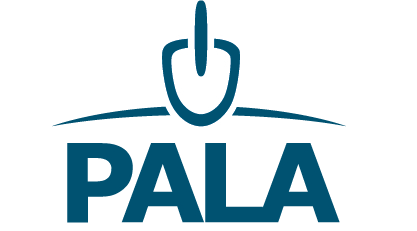In the dynamic landscape of pipe fusion, a transformative force has emerged – electrofusion. This innovative technique introduces a distinctive approach, steering away from conventional methods to usher in a new era of precision and efficiency in joining pipes.
What Is Electrofusion?
Electrofusion involves the application of controlled electrical energy to specific points on the pipe surfaces that need to be joined. This controlled energy generates localized heat, melting the plastic material and allowing the fusion of the pipes to occur. Electrofusion is an advanced welding technique used for joining plastic pipes, particularly focusing on materials like PE (Polyethylene) piping systems. This innovative method integrates the principles of electricity and heat fusion to create seamless and durable connections in the world of pipe infrastructure.
Electrofusion Process
The key steps involved in electrofusion include:
1. Pipe Alignment
The process begins with the careful alignment of the pipes to be fused. Proper alignment ensures a precise and secure connection.
2. Surface Preparation
The surfaces of the pipes are cleaned and scraped to remove any contaminants. A clean surface is crucial for the success of the electrofusion process.
3. Electrofusion Fitting Attachment
An electrofusion fitting, equipped with embedded heating elements and electrical terminals, is attached to the joint between the aligned pipes. This fitting acts as the catalyst for the fusion process. Ensuring the coupler is installed at the correct depth is critical.
4. Clamping and Sealing
Clamps are applied in certain applications to secure the electrofusion fitting in place, creating a sealed environment. This containment is essential for controlling the fusion process and ensuring a consistent and strong joint.
5. Introduction of Electricity & Fusion
Controlled electrical current is then introduced through the fitting’s terminals. The electrical energy flows through the embedded heating elements, generating heat. The generated heat is concentrated at the interface between the fitting and the pipe surfaces. This localized heat causes the plastic material to melt, creating a molten zone. As the plastic material becomes molten, the pipes’ surfaces fuse together. This fusion occurs at the molecular level, creating a seamless and integral connection.
6. Cooling, Completion and Testing
Following the fusion, the electrofusion cycle enters the cooling phase. The joint is allowed to cool and solidify, ensuring the formation of a strong and durable bond. Once the joint has cooled, the clamps are removed, and the electrofusion process is complete. The integrity of the fusion is often verified through non-destructive testing methods to ensure the joint meets the required standards.
Electrofusion vs. Other Types of Pipe Fusion
Electrofusion is not the sole effective technique for pipe fusion. Explore its comparison with other widely used pipe fusion methods such as butt fusion, saddle fusion, and socket fusion.
Electrofusion
Method:
Involves connecting two ends by sliding and coupler over the ends. The coupler has coils inside that are heated up to make a leak-free pressure rate weld.
Advantages:
- Provides a strong, continuous connection.
- Suitable for creating complex shapes and custom profiles.
- Great for tight area repairs
Saddle Fusion
Method:
Used to create branch connections by attaching a saddle-shaped fitting to an existing pipe. The saddle is heated, and pressure is applied to weld it to the main pipe.
Advantages:
- Ideal for creating branch connections in a pipeline.
- Requires minimal excavation, making it suitable for repairs and retrofits.
Butt Fusion
Method:
Involves joining two pipe ends by heating them to their melting point and then pressing them together. The melted material fuses, creating a seamless, end-to-end connection.
Advantages:
- Produces leak-proof and long-lasting joints.
- Suitable for a wide range of thermoplastic materials.
- No need for additional adhesives or solvents.
- Minimal maintenance is required.
- Consistent and repeatable results.
Socket Fusion
Method:
Involves heating the outside of a pipe and the inside of a fitting, then inserting the pipe into the fitting, creating a secure joint when the material cools.
Advantages:
- Suitable for small-diameter pipes and fittings.
- No need for external clamps.
- Creates joints that are resistant to pull-out forces.
When to Use Electrofusion
Electrofusion stands as a preferred method for pipe joining in a myriad of industries and sectors where precision and efficiency are paramount. Notably, it finds widespread use in:
- City Water Networks: Municipalities rely on electrofusion for creating resilient joints in water distribution networks, ensuring a steady and leak-free water supply.
- Industrial Pipelines: Industries with intricate pipeline systems, such as chemical processing plants, benefit from electrofusion’s precision in creating secure connections.
- Mining Pipelines: Electrofusion plays a crucial role in mining operations by providing durable joints in pipelines transporting essential liquids.
- Gas Distribution Networks: Gas utilities utilize electrofusion for its reliability in creating joints that withstand the demands of gas distribution systems.
- Infrastructure Projects: Electrofusion is integral to large-scale infrastructure projects, ensuring the longevity and stability of pipeline connections.
Benefits of Electrofusion
Electrofusion proves to be a versatile and reliable solution across various industries, offering efficient, consistent, and environmentally friendly pipe joining capabilities.
- Efficiency and Speed: Electrofusion offers a swift and efficient process for joining pipes, reducing downtime and enhancing overall project timelines.
- Consistent and Reliable Joints: The controlled nature of electrofusion ensures uniform and reliable joints, contributing to the longevity and stability of the pipeline system.
- Minimal Environmental Impact: Electrofusion minimizes environmental impact by eliminating the need for additional adhesives or solvents, aligning with sustainable practices.
Contact US FUSION’s Electrofusion Experts
Electrofusion stands out as a versatile and reliable welding technique in the realm of joining thermoplastic pipes and fittings across diverse industries. Its proficiency in establishing leak-free and enduring connections positions it as a crucial process for ensuring the effective and secure conveyance of water, gas, chemicals, and more.
If your project necessitates on-site plastic fusion work, the US FUSION team, specializing in electrofusion, is at your service. Our technicians hold ASME Section IX certification and boast nearly four decades of experience in HDPE and welded plastic pipe electrofusion. Reach out to discover how we can contribute to your project, or conveniently request a free quote online here.







